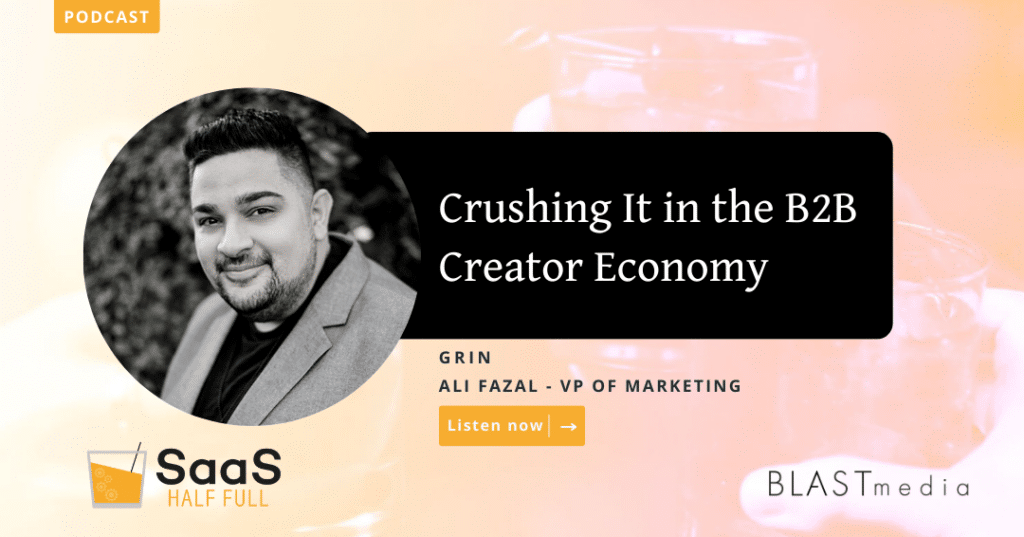Our circle of influence has fundamentally changed. Whereas we used to follow brands, we now follow people. And while B2C companies were quick to invest in online influencers, B2B marketers took a little longer — but now, they’re finally vibin’ with the creator economy.
In this episode, Ali Fazal, VP of Marketing at GRIN, explores the most impactful channels through which to reach consumers, gives advice on the possible value exchanges between B2B brands and creators, and digs into how B2B brands should think about influencer marketing (spoiler alert: it has very little to do with follower count).
Step aside, Kardashians — influencer culture is expanding
Traditionally, influencers were celebrities made famous through reality TV or other high-profile activities. However, Ali said this is no longer the case for most online creators.
“Everybody from your neighbor whose opinion you really trust ’cause they live in the same place as you and they have a similar lifestyle to you — all the way to, you know, the celebrity you’ve been following [for years],” said Ali. “All of these people classify as creators.”
Ali cited journalists, PR professionals, podcast hosts and athletes as key influencers in their respective professions. But in the age of widespread social media, less traditionally qualified individuals have also jumped into the influencer game to share their opinions on lifestyle choices and products. These creators may have fewer than 1,000 followers, but they can still significantly impact those individuals’ buying behaviors — and therein lies the opportunity for B2B marketers.
“As kumbaya as [it] sounds, there is a place for all different creator types and sizes on different networks,” said Ali.
But which of these networks are profitable for B2B influencing?
Where should your brand live?
The perhaps unexpected answer, according to Ali? Everywhere. A good mix of content across several channels is the most reliable way to meet your audience wherever they live, work and play. For example, while LinkedIn is a powerful channel to draw in B2B buyers, TikTok is a fantastic channel for catching B2B buyers during their downtime.
Part of the reason B2B marketing is expanding, according to Ali, is the shifting culture of work brought about by the pandemic.
“This is yet another way consumer behavior has shifted in that the lines between work and leisure are so blurred, right? Especially for those of us who work from home or work hybrid,” said Ali.
Finding the right champions
Ali mentioned most SaaS products — scratch that, most brands, period — have a mission or goal to change their industry’s landscape. For example, Salesforce aims to create meaningful connections between companies and their customers, and PANBlast is working to redefine SaaS marketing by bringing industry-leading expertise to our account teams. 😉
B2B marketers can use their organization’s mission or value statement to their advantage by seeking like-minded creators who can vouch for their product. Ali connected this method of influencer marketing with another, more steadfast B2B marketing strategy: customer stories.
“What really sets vendors apart is social proof,” said Ali. “Of course, my marketing team at GRIN is going to put all the amazing stuff on our website, all of the G2 badges [and other accolades] we’ve received… But really, who you’re going to believe if you’re thinking of buying influencer marketing software is someone who has used GRIN, is trying to accomplish something similar to you, is in your community and has credibility… Authenticity is at the root of influencer marketing.”
For more of Ali’s insights, listen to episode 351 of SaaS Half Full.

